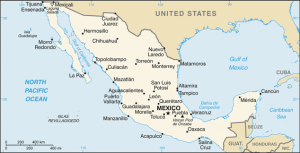With the addition of several hundred new autochthonous, or locally-acquired chikungunya cases during the past week, the cumulative total in Mexico has now exceeded 10,000 cases.

Local transmission of chikungunya began in Mexico in Oct. 2014 and by years end, 155 cases were confirmed. However, the cases exploded in 2015 with the update numbers through Nov. 8, or epidemiological week 45 has reached 9,952 cases.
On Thursday, the Centers for Disease Control and Prevention (CDC) updated their travel notice for Mexico. CDC recommends that travelers to Mexico protect themselves from chikungunya by preventing mosquito bites.
Chikungunya is a viral disease transmitted by the bite of infected mosquitoes such as Aedes aegypti and Aedes albopictus. It can cause high fever, join and muscle pain, and headache. Chikungunya does not often result in death, but the joint pain may last for months or years and may become a cause of chronic pain and disability. There is no specific treatment for chikungunya infection, nor any vaccine to prevent it. Pending the development of a new vaccine, the only effective means of prevention is to protect individuals against mosquito bites.
Robert Herriman is a microbiologist and theEditor-in-Chief of Outbreak News Today and the Executive Editor of The Global Dispatch
Follow @bactiman63
Related:


4 thoughts on “Mexico chikungunya cases top 10,000, CDC updates travel notice”